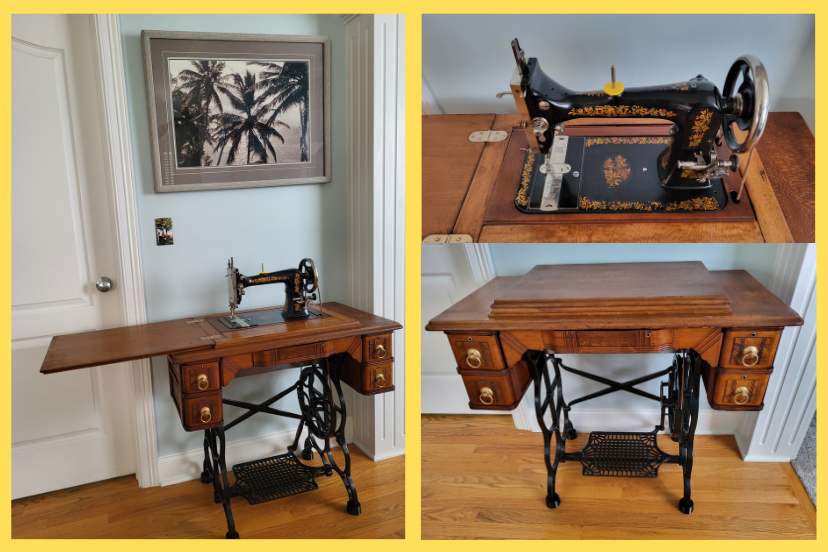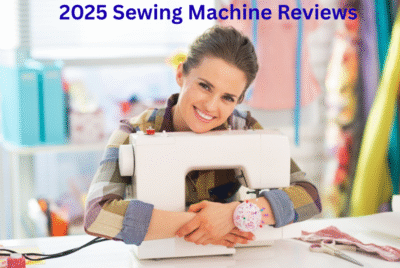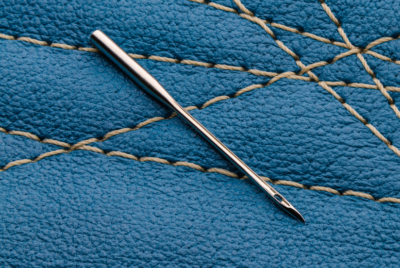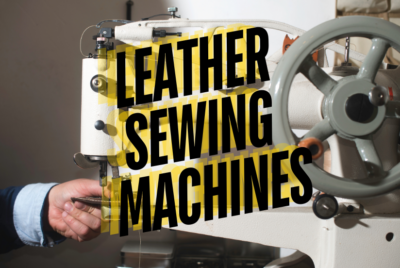Antique Treadle Sewing Machines: Timeless Beauty
Welcome to the fascinating world of antique treadle sewing machines! View the restoration of this Davis Treadle Sewing Machine and cabinet it resides in.
As an enthusiast in this sewing machine collector’s niche, I am here to guide you through the captivating history, operation, and reasons why these vintage marvels still hold a special place in our hearts and homes.
We’ll explore the intriguing journey of antique treadle sewing machines, their unique advantages, notable manufacturers, and alternative options available today.
History of Antique Treadle Sewing Machines
From Innovation to Icon: A Journey Through Time
The history of antique treadle sewing machines traces back to the early 19th century when inventors sought to improve the task of sewing. At that time, sewing was a labor-intensive task that required hours of manual stitching by hand.
Inventors recognized the need for a more efficient and automated solution, which led to the development of treadle sewing machines.
The introduction of the treadle mechanism, powered by foot pedals, revolutionized the way garments were made.
Inventors
Renowned inventors like Isaac Merritt Singer and Elias Howe played pivotal roles in refining the design and popularizing these machines. By the late 1800s, treadle sewing machines had become a common fixture in households worldwide.
Isaac Singer, the founder of the Singer Manufacturing Company, is particularly renowned for his contributions to the sewing machine industry. He patented various improvements to the machine, including a tension system and a lockstitch mechanism. Singer’s innovative designs and marketing strategies helped establish treadle sewing machines as household staples.
Elias Howe also made significant contributions to the development of treadle sewing machines. In 1846, he patented the first practical sewing machine, which incorporated many features still used in modern machines today. Howe’s machine utilized a needle with an eye at the point and a shuttle mechanism that created a lockstitch. His inventions laid the foundation for subsequent advancements in sewing machine technology.
Design Improvements
The breakthrough in the design of treadle sewing machines came with the introduction of the foot pedal mechanism. This innovation allowed the user to power the machine by pumping the foot pedals up and down, creating a continuous motion that drove the sewing mechanism.
This mechanism was a significant advancement as it eliminated the need for manual hand cranking or external power sources.
Impact
These machines revolutionized the garment industry, enabling faster and more efficient production of clothing and other textile goods. Treadle sewing machines not only improved productivity but also allowed for more intricate and precise stitching, opening new possibilities for intricate designs and embellishments.
The craftsmanship of antique treadle sewing machines was remarkable. They were often crafted with ornate cast iron frames and elegant wooden cabinets, transforming them into beautiful pieces of furniture. The attention to detail and intricate decal work showcased the artistry of the time. These machines were not only functional tools but also symbols of craftsmanship and elegance.
Modernization
While the advent of electric sewing machines in the early 20th century gradually replaced treadle machines in many households, their legacy and historical significance remain intact. Today, antique treadle sewing machines are cherished as collectibles and cherished heirlooms, evoking a sense of nostalgia for a bygone era of sewing craftsmanship and innovation.
Antique Treadle Sewing Machines
A Symbol of Craftsmanship and Elegance
Antique treadle sewing machines were not only tools for sewing but also exquisite pieces of furniture. Crafted with intricate woodwork, ornate decals, and cast-iron frames, these machines added a touch of elegance to any room.
Their craftsmanship and attention to detail made them cherished family heirlooms passed down through generations.
Mechanics Behind the Magic: How Antique Treadle Sewing Machines Work
Operating an antique treadle sewing machine is a delightful experience. The foot pedals, connected to a series of belts and pulleys, convert the rhythmic up-and-down motion into a rotary motion that drives the needle.
The seamless integration of human effort and mechanical precision allows the user to control the speed and stitch quality with their footwork.
Symphony of Movement and Control
As the foot pedals are pressed, the flywheel rotates, driving the upper and lower shafts in synchronization.
The upper shaft controls the needle’s up and down motion, while the lower shaft transfers power to the bobbin winder and feed dogs. The rhythmic movement of the needle, guided by the thread, creates perfectly formed stitches, bringing your creative visions to life.
Timeless Charm and Authenticity
Owning and using an antique treadle sewing machine is like stepping back in time. The nostalgic charm, coupled with the authenticity of using a manually powered machine, provides a unique connection to the craftsmanship of yesteryears.
The gentle hum of the mechanism and the soothing rhythm of the foot pedals create a serene sewing experience.
Sustainability and Self-Sufficiency
In a world increasingly conscious of environmental impact, antique treadle sewing machines offer a sustainable alternative to their electric counterparts.
By harnessing human power, these machines eliminate the need for electricity and reduce carbon footprint.
Moreover, their mechanical simplicity allows for easy maintenance and repairs, fostering self-sufficiency and reducing dependence on modern technology.
Icons of the Industry: Manufacturers of Antique Treadle Sewing Machines
Several manufacturers played significant roles in the production of antique treadle sewing machines. The following companies left an indelible mark in sewing machine history:
Singer: The Singer Manufacturing Company, founded by Isaac Merritt Singer, became synonymous with sewing machines. Their treadle models, such as the Singer Model 66 and Singer Model 127, remain highly sought after by collectors.
Wheeler & Wilson: Known for their innovative designs, Wheeler & Wilson produced treadle sewing machines that combined beauty and functionality. The Wheeler & Wilson No. 9 is a prime example of their craftsmanship.
White: The White Sewing Machine Company produced a wide range of treadle models, including the popular White Family Rotary. Their machines were known for their smooth operation and durability.
Preserving History, One Stitch at a Time: Collecting and Restoring Antique Treadle Sewing Machines
Collecting and restoring antique treadle sewing machines is a rewarding hobby that allows you to connect with the past. When acquiring a vintage machine, look for one in decent condition with intact decals and minimal rust.
After acquiring an antique machine, attention should be paid to preserving it. “Preserving Your Vintage Sewing Machine” offers guidelines to help you keep up your heirloom to ensure its longevity and functionality.
An additional book resource is “Treadle Sewing Machines: Clean and Use an Iron Lady“. This little book is a treasure trove of information and tips on how to identify the parts of a treadle base and the variety of machines that would fit into one. Some of the best information is the list of products the author recommends for cleaning and restoring an iron lady.
Restoring these machines requires patience and attention to detail, but the satisfaction of reviving a piece of history is unparalleled.
Online forums and communities dedicated to treadle sewing machines are excellent resources for tips, advice, and finding replacement parts.
Modern Alternatives to Antique Treadle Sewing Machines: Embracing the Best of Both Worlds
While antique treadle sewing machines hold a special place in our hearts, modern technology has brought forth a range of alternatives that combine convenience with traditional charm.
Electric sewing machines with retro designs offer a nostalgic feel, with features like variable speed control and automated functions.
Hybrid machines, combining manual and electric capabilities, provide the flexibility of choosing between foot pedal power and motorized operation. These alternatives offer a bridge between the past and present, catering to diverse needs and preferences.
How to Identify Your Vintage Sewing Machine: A Step-by-Step Process
As an avid collector or enthusiast of vintage sewing machines, one of the most exciting and rewarding aspects is identifying the machines in your possession.
Vintage sewing machines carry a rich history, and knowing their brand, model, and even their manufacturing date adds a fascinating layer of knowledge to your collection.
Here, we will guide you through a step-by-step process to help you identify your vintage sewing machine and provide you with valuable resources along the way.
Whether you are a beginner or a seasoned sewist, knowing the make and model of your machine can be invaluable for troubleshooting, obtaining parts, or even selling or buying a new one.
Identifying your sewing machine correctly is the first step toward gaining a deeper understanding of its capabilities and potential limitations.
It can also assist you in finding the appropriate accessories, such as presser feet, needles, or bobbins. Let’s dive into the methods you can use to identify your sewing machine.
The International Sewing Machine Collectors’ Society (ISMACS) website is an excellent resource for vintage sewing machine enthusiasts. It provides comprehensive information on various sewing machine brands, their history, and models.
The website also features a helpful online database that allows you to search for specific machine models and access valuable resources, including user manuals and vintage advertisements.
1. Begin with the Brand
When it comes to identifying your vintage sewing machine, the brand can often be the first clue. The manufacturer’s name is usually prominently displayed on the machine’s body or base.
Start by examining your sewing machine closely, paying attention to any logos, engravings, or labels. Once you have identified the brand, note it down for further research.
2. Check for any labels or markings
Examin3 your sewing machine for any labels, markings, or engravings that could indicate the brand, model, or serial number. Look closely at the body, front, back, or underside of the machine.
Many manufacturers place identification information in these areas. You might find brand names, model numbers, or even manufacturing dates. Take note of any details you find.
Pay attention to the physical features of your sewing machine. Note the overall shape, color, and design. Some brands have distinct design elements that can help with identification.
Look for any unique features, such as built-in stitches, special buttons, or attachments. These distinctive characteristics can often be associated with specific sewing machine models or brands.
3. Utilize Model Numbers
Model numbers are an essential component in identifying vintage sewing machines.
Many manufacturers assigned unique model numbers to their machines, which can provide vital information about the specific features and capabilities of a particular model. The model number on your machine is usually found on a metal plate, badge, or stamped into the machine’s body.
4. Investigate Clues about the Manufacturing Date
Determining the manufacturing date of your vintage sewing machine can provide valuable insights into its historical context. Look for clues such as serial numbers, patent numbers, or any manufacturing markings. These details can often be found on the metal plate or engraved into the machine’s body.
5. Research the brand and model
Once you have gathered some initial information about your sewing machine, it’s time to conduct research. Utilize the vast resources available on the internet to search for information about the brand and model you suspect your machine belongs to.
Visit manufacturer websites, sewing machine forums, or online communities dedicated to sewing. They often provide valuable insights, user manuals, or even catalogs from different time periods.
6. Consult the user manual or guide
If you are lucky enough to that sewing machine came with a user manual or guide, it can be a treasure trove of information. Sometimes these are available online.
Check if the manual includes any identification details, such as the model name or number. Look for sections that discuss machine specifications or parts diagrams. By referencing the manual, you can often find confirmation of the make and model of your sewing machine.
7. Seek professional help
If you are unable to identify your vintage sewing machine using online resources, consider reaching out to local sewing machine repair shops or dealers. These professionals often have extensive experience with a wide range of sewing machine models and brands. They can examine your machine, identify its unique features, and offer insights into its history and origin.
8. Join sewing machine communities
Engaging with sewing machine communities can be an excellent way to get help with identifying your sewing machine.
These platforms provide opportunities to interact with experienced collectors and enthusiasts who are often willing to share their expertise and insights. They might recognize specific details or share their own experiences and knowledge.
One such group is the Vintage Singers Group. It is a vibrant community of vintage sewing machine enthusiasts. By joining this group, you can connect with like-minded individuals, share your discoveries, and seek assistance in identifying your vintage sewing machine. The members are passionate and knowledgeable, making it an ideal platform for finding answers to your questions.
9. Keep records for future reference
Once you have successfully identified your sewing machine, it’s essential to maintain accurate records for future reference.
Create a document or use a dedicated notebook to record the identification details, including the make, model, and any additional information you have gathered.
You might also want to document the machine’s history, such as when and where you acquired it, any repairs or modifications, or notable projects you have completed with it.
These records will prove valuable if you ever need to seek assistance or sell the machine in the future.
The Reward of Antique Sewing Machine Collecting
Antique treadle sewing machines capture the essence of a bygone era while offering practicality, sustainability, and an unmatched sewing experience.
Their rich history, intricate mechanics, and timeless charm make them cherished possessions for enthusiasts and collectors alike. Whether you choose to acquire, restore, or admire these beautiful machines, their enduring appeal will continue to inspire generations to come.
Identifying your sewing machine is an exciting journey that allows you to delve deeper into its history and capabilities. By following the steps outlined in this article and utilizing the recommended resources, you can unlock the secrets of your machine’s brand, model, and manufacturing date.
Using this guide can start you on your journey to increase your knowledge about your machine, connect with other sewing enthusiasts, and ensure that you have the necessary information for future reference.
Remember to enjoy the process and embrace the rich heritage of sewing machines as you explore the identity of your beloved companion.
FAQs
Are antique treadle sewing machines still functional for everyday use?
Certainly! While antique treadle sewing machines may require some maintenance and adjustments, they can still be used for everyday sewing tasks. Many enthusiasts enjoy the unique experience these machines offer.
Can I find replacement parts for antique treadle sewing machines?
Replacement parts for antique treadle sewing machines can be found through specialized vendors, online auctions, or dedicated sewing machine communities. Restoring these machines to working condition is a popular hobby for many.
How much do antique treadle sewing machines cost.
The cost of antique treadle sewing machines varies depending on factors such as rarity, brand, condition, and historical significance. Prices can range from a few hundred dollars to several thousand for exceptionally rare or well-preserved models.
Can antique treadle sewing machines sew modern fabrics?
With the right needle and thread, antique treadle sewing machines can handle a wide range of fabrics, including modern materials. They may require some adjustments to accommodate different fabric thicknesses.
Are treadle sewing machines difficult to learn for beginners?
While treadle sewing machines may have a learning curve, they can be mastered with practice and patience. Many enthusiasts find the process of learning and mastering the foot pedal rhythm to be an enjoyable and rewarding experience.
RetroSewMachines.com is a participant in the Amazon Services LLC Associates Program. As an Amazon Associate, we earn from qualifying purchases. We also participates in other affiliate programs and may earn a referral commission if you purchase through links on this website. The information presented here is for general educational purposes only.





Comments are closed.